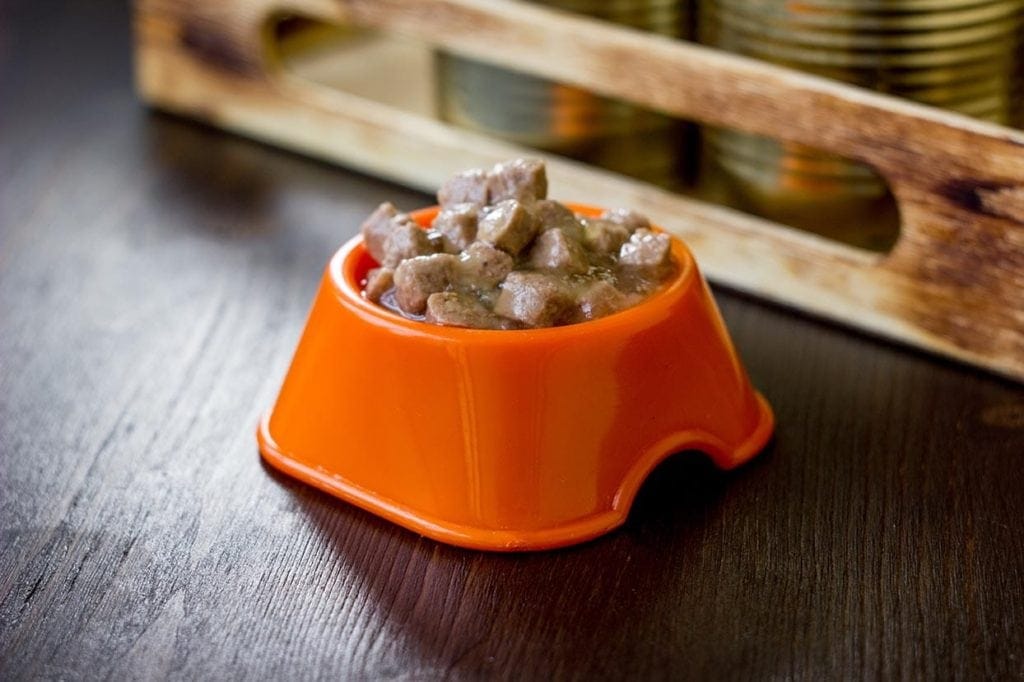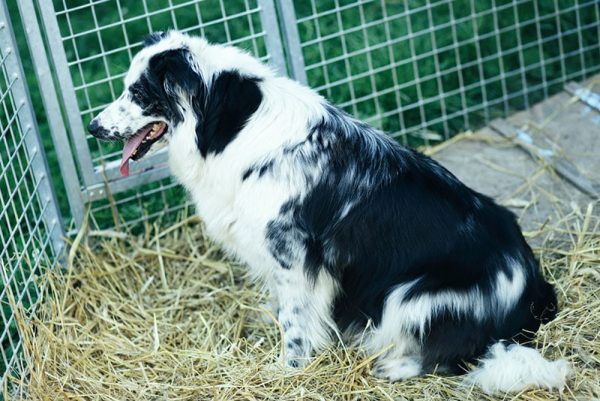In this article
View 2 More +Learning how much to feed your dog and what type of food to offer at various life stages is crucial when deciding on a dog’s diet. It is vital to check out proper measurements based on activity level, age, and weight in order to prevent underfeeding or overfeeding, which could potentially lead to nutritional deficiencies or obesity.
The general rule is to follow the feeding instructions on the can based on your dog’s weight, but there may be certain instances in which you need to feed more or less, such as health conditions or your dog’s age. In this article, we aim to give you an idea of how to determine the amount of canned food to feed your canine.

Clear Diet Changes with Vet First
If you are interested in feeding your dog canned food, clear it with a vet first, especially if you are making a major change to your dog’s diet, such as switching over from feeding dry kibble only. The reason for this is that you need to make the switch gradually in order to prevent an upset tummy in your dog. A vet can explain how to switch dog food properly.
Be sure to explain what type of dog food you plan to feed, how much your dog weighs, and the amount you plan to give them. A vet might request that you bring them in for a checkup before giving any specific dietary advice. That way, they can see how quickly your dog is growing, how well they are maintaining, and other factors to make sure that canned food is right for them.
If you need to speak with a vet but can't get to one, head over to PangoVet. It's our online service where you can talk to a vet online and get the personalized advice you need for your pet — all at an affordable price!


How Much Canned Food Should You Feed Your Dog?
There is no one answer as to how much canned food to feed your dog. Whenever you are trying to figure out how much to feed your dog, it is important to take several factors into consideration, including their weight, age, and any health conditions they may have. Ultimately, it’s best to ask a veterinarian so they can give you the proper measurements.
Weight
Weight plays a huge factor when you’re wondering how much canned food to feed your dog because many canned dog foods base the portion size on the weight of a healthy adult.
Smaller dogs will obviously get smaller portions while larger dogs get larger portions, but ultimately, the amount that you feed a healthy adult dog will be based on their “healthy” weight.
Dogs that are overweight, underweight, or have a health condition that makes maintaining a certain weight hard may require more or less food than what the can recommends, so weight is not a be-all, end-all indicator of how much to feed. Be sure to consider other factors that can affect your dog’s weight as well, which we’ll discuss below.

Life Stage
Your dog will have different needs at every life stage. When they are puppies, dogs will need a recipe crafted specifically for growing bodies that include extra protein and calories and other ingredients to help them develop properly.
When they are adults, they will need a healthy maintenance diet. If your dog develops any sensitivities or allergies, the diet can be tweaked to avoid the irritating ingredients. But as long as your dog is at a healthy weight, you can generally stick with the feeding recommendations on the can.
When your dog is a senior, they need to switch to a supportive diet. They may need joint support, using valuable nutrients like glucosamine, chondroitin, and omega fatty acids. Senior dogs may also need more or fewer calories depending on their activity level and ability to maintain a healthy weight.
Activity Level
Activity level says a lot about how much to feed your dog. If you have a plump little cutie that’s constantly cuddled up on the couch taking naps, they might need significantly less than a dog that’s running laps around your backyard.
If you over feed a dog that doesn’t burn those calories, they’re going to store it as fat, which we all know, can be unhealthy because it can lead to obesity and other health problems down the line.
The exact amount of calories an individual animal needs to maintain a healthy weight is variable and influenced by many factors including genetics, age, breed, and activity level. This tool is meant to be used only as a guideline for healthy individuals and does not substitute veterinary advice
Amount of Dry Food Fed
If you are feeding your dog wet canned food on top of dry food, be sure to properly portion. For example, you won’t want to give a whole serving of dry food with a whole serving of wet food. Portion the correct dry kibble to wet canned food ratio. Some dog foods mention how to portion wet food with dry food on the packaging, but if you’re unsure, a vet can advise you on how to do this.
If you start overfeeding, it can quickly lead to weight gain and obesity. So it’s crucial to catch any measuring mistakes right away. If you notice your pup is getting rather plump, you might want to think about rechecking those portions!
Health Conditions
Some dogs may have health conditions that make them more prone to weight gain or prone to losing weight. These health conditions may require you to feed your dog more or less food in order to help them maintain a healthy weight.


Why Give Canned Food?
Canned food has many perks, and several different types of dogs can benefit from it. Some people choose to give their canines a complete diet of only canned food, while others switch it up and offer a dry kibble as well.
Any dog could potentially benefit from canned food, though it can work for some better than others. While many pet parents tend to raise eyebrows because of the potentially high sodium and preservative content in canned food, many can agree that it is more appetizing.
Dogs can have a laundry list of other benefits from wet canned food. Here are just a couple.
Dogs With Dental Issues
Dogs that have trouble eating due to bad teeth, pulled teeth, or other dental problems might do very well with canned food. You can get canned food in all different consistencies, so you can select the one that works best for your dog.
Some might say that wet food can actually cause issues due to the lack of crunch of kibble—not getting teeth clean like it should. But dental health is more about regular tooth brushing and veterinary cleanings than the type of food a dog eats.
Picky Dogs
Some dogs are just downright picky. It doesn’t matter what kibble you seem to put in front of them, they snub their nose and walk away. Giving your dog canned food can stimulate their senses and draw them to the bowl.
Even if you mix it with dry kibble, it can be enough of a motivator to get your dog to take a couple more bites than usual.

Dogs That Need to Gain Weight
If your dog is on the skinny side, getting a higher amount of canned food in their diet can fatten them up in a healthy way. You would want to do this gradually and under the supervised guidance of a veterinarian but it will likely add some extra protein and fat.
Dogs with High Metabolisms or High Energy
If your dog has a high metabolism, they really need to have a solid diet that delivers the amount of energy they require. As their bodies burn up the calories, it can quickly lead to weight loss.
High protein is a very important component if you have a high-energy breed; having a good amount of protein is a great way to boost nutrient intake and provide energy. These dogs definitely need the uptake of calories, and wet canned food is a very simple way to provide this.

Conclusion
Remember that wet food portions are strictly dependent on the dog’s weight, age, and overall activity level and health. So, portions will change depending on those factors. Generally, you can follow the feeding directions on the can. But, a vet can assess your dog and determine the amount of wet dog food they will need based on a few factors, like whether it is stand alone or used in combination with dry kibble.
Featured Image Credit: Maksumov, Shutterstock



















